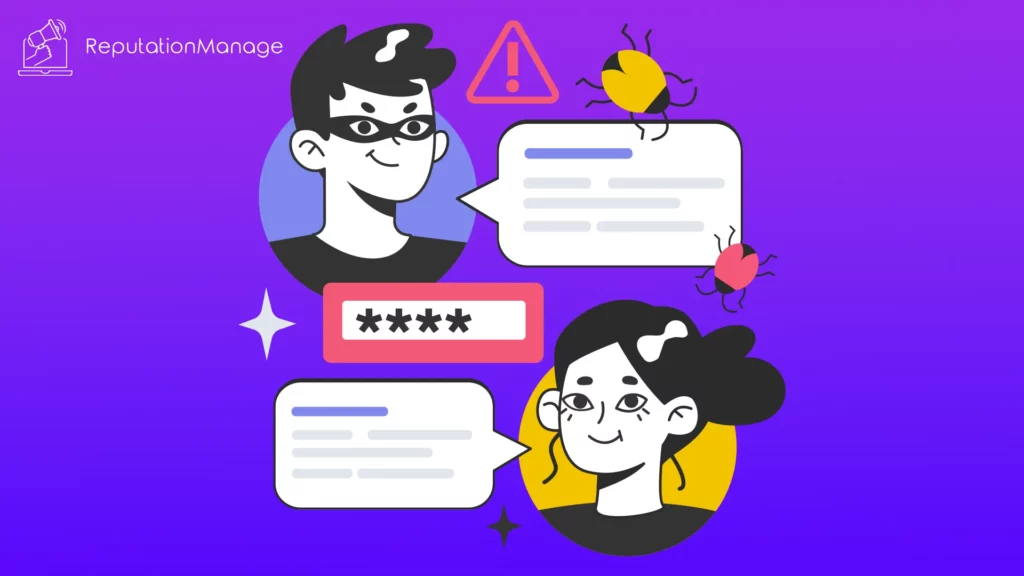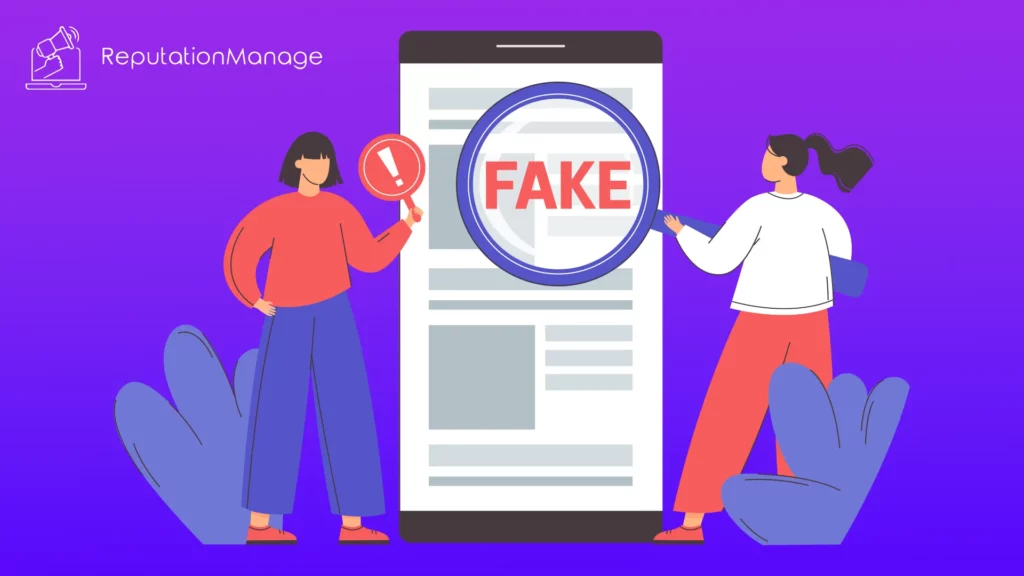Ever wondered if you’re reading Trustpilot fake reviews? You’re not alone. With so many businesses relying on Trustpilot reviews to build their reputation, fake feedback has become a real issue.
Some companies flood their profiles with positive reviews to attract more customers, while others post fake negative reviews to damage competitors.
But how can you tell the difference between genuine reviews and misleading ones?
In this guide, we’ll break down the signs of fake reviews, show you how to verify feedback and explain what to do if you suspect manipulation. Get ready to spot the red flags and make smarter purchase decisions.
Table of Contents
Key Takeaways
- Fake Trustpilot reviews can mislead consumers – Some businesses use fake positive reviews to attract customers or negative ones to harm competitors.
- Spotting fake reviews is possible – Look for vague language, sudden review spikes, repetitive wording, and unverified reviewer accounts.
- Trustpilot allows businesses to report fake reviews – Companies can flag suspicious feedback, provide evidence, and request removal if it violates guidelines.
- Always verify reviews before trusting them – Cross-check feedback across multiple platforms to ensure authenticity before making a purchase decision.
Why Do Companies Post Fake Reviews?

Fake reviews have become a major problem on Trustpilot and similar platforms. Many businesses use them to manipulate their rating, attract more customers, and influence purchase decisions.
While some companies genuinely want to showcase real experiences, others try to control how they appear in Trustpilot reviews by boosting their image with positive reviews or hiding negative reviews.
Reasons Businesses Use Fake Reviews
These are the common reasons why some businesses resort to posting fake reviews to manipulate their Trustpilot profile and improve their reputation:
- To Improve Trust and Attract More Customers: Companies know that a high rating on Trustpilot influences consumers. If potential buyers see a page full of glowing feedback, they’re more likely to trust the service.
- To Bury Negative Reviews: Some businesses don’t want potential customers to see complaints. They flood their Trustpilot profile with positive reviews to push negative reviews further down the page, making them harder to find.
- To Hurt Competitors: Posting fake reviews isn’t just about making a company look good it’s also a strategy used to damage rivals. Some businesses pay people to write fake reviews attacking a competitor’s service, making them seem completely untrustworthy.
- To Influence Search Results: Fake reviews can also help a company appear more often in search results. The more reviews a business has, the higher it may rank when potential customers look for feedback.
Although Trustpilot has guidelines against fake reviews, many still slip through. That’s why consumers need to be aware of these tactics and learn how to spot them.
Pro Tip: Boost your Trustpilot profile by partnering with a reputable service to buy real Trustpilot reviews. Authentic, verified feedback helps build trust and attract more customers.
Signs of Fake Reviews on Trustpilot
Not all Trustpilot reviews can be trusted. While many businesses rely on genuine reviews to build credibility, some manipulate feedback to mislead potential customers.
Fake reviews often follow patterns that make them easy to spot if you know what to look for.
How to Identify Fake Reviews
- Over-the-Top Praise Without Details: Real customers usually share specific experiences, mentioning the product, service, or purchase process. Fake reviews often use vague phrases like “Best company ever!” without providing meaningful information.
- Unnatural Review Patterns: If a business suddenly gets a flood of positive reviews in a short time, it might be trying to push down negative reviews. A steady flow of feedback is normal, but a sudden spike can be suspicious.
- Similar Wording Across Multiple Reviews: Fake reviews often look alike. If multiple reviewers use nearly identical phrasing, it may be a sign that the company is paying for fake feedback.
- Lack of Verified Purchases: Real consumers often provide order details or mention their purchase experience. If many Trustpilot reviews lack specifics, they may not be authentic.
- Extremes in Ratings: A mix of positive reviews and constructive criticism is normal. If a business has only glowing feedback or an overwhelming number of 1-star reviews, something might be off.
- Fake Reviewer Profiles: Some fake reviewers have no review history or leave feedback for multiple unrelated companies. Checking their account activity can reveal if they consistently post similar reviews across different industries.
How Fake Reviews Affect Search Results
Fake feedback influences search results by making a business look more credible than it is.
When a company fills its Trustpilot profile with fake reviews, it can appear more trustworthy to potential customers searching online.
This manipulation hurts consumers who rely on honest feedback when choosing a service or product.
Trustpilot has rules for displaying reviews, but fake feedback still slips through. Knowing these red flags helps consumers make smarter decisions before committing to a purchase.
How to Spot Fake Positive Reviews

Fake Trustpilot reviews can make a business look more reliable than it is. Companies use them to improve their reputation, push down negative reviews, and mislead potential consumers.
Knowing how to recognize these fake reviews helps you make smarter decisions before making a purchase.
Unrealistic Praise Without Substance
Fake reviews often include exaggerated claims without real details. A reviewer saying, “This is the best service ever!” without mentioning their experience is a common sign of manipulation.
A Sudden Surge of Positive Feedback
If a company gets a flood of positive reviews in a short time, it might be an attempt to hide bad feedback. Real customers leave feedback gradually, not all at once.
Duplicate Wording and Unverified Accounts
When multiple reviewers use the same phrases, the business might be paying for fake feedback. Checking a reviewer’s account can reveal patterns of fake activity.
Why Fake Reviews Affect Search Results
Fake feedback improves a company’s ranking in search results, making it seem more trustworthy. This can mislead consumers who rely on Trustpilot reviews to make informed decisions.
How Trustpilot Handles Fake Reviews
While Trustpilot’s fake reviews violate the platform’s rules, not all fake feedback gets removed. Companies can request to remove reviews, but it requires proof.
Checking other sources like Google Reviews or social media can help verify if a business is legitimate.
Fun Fact: Did you know that Trustpilot processes a massive 1,800 terabytes of data each month, reflecting its extensive global reach and the vast amount of consumer feedback it handles.
How to Identify Fake Negative Reviews
Not all Trustpilot reviews come from real consumers. While some negative reviews reflect genuine complaints, others are fake posted by competitors, disgruntled ex-employees, or even customers looking for a refund they don’t deserve.
Learning to spot fake negative reviews helps ensure that you don’t judge a business unfairly.
Signs of Fake Negative Reviews
| Factor | Genuine Negative Reviews | Fake Negative Reviews |
| Details | Describe a real issue with the service or business | Vague, lacks specific details about the purchase |
| Reviewer’s Profile | Has a history of balanced feedback on Trustpilot | A new or inactive reviewer with only extreme feedback |
| Tone | Neutral or frustrated but reasonable | Overly aggressive, personal attacks, or exaggerated claims |
| Pattern | Spread out over time | Multiple reviews posted in a short period |
| Business Response | Engages to resolve the issue | No response or ignored complaints |
Why Some Businesses Get Fake Negative Reviews
- Competitor Attacks: Some businesses pay people to leave fake negative reviews on a rival’s Trustpilot profile. This damages the competitor’s rating and discourages potential consumers from making a purchase.
- Unhappy Customers Seeking Refunds: Occasionally, a reviewer might leave a fake complaint to pressure a business into issuing a refund. If a review demands a refund without explaining the service issue, it might not be reliable.
- Disgruntled Former Employees: Ex-employees sometimes leave fake reviews as retaliation. These often focus on personal issues rather than the service provided to customers.
How Businesses Can Remove Fake Reviews

Fake Trustpilot reviews can damage a business’s reputation and mislead potential customers. While Trustpilot allows open feedback, it also has guidelines to prevent abuse.
If a company identifies fake reviews, it can take steps to have them removed.
Steps to Remove Fake Reviews on Trustpilot
- Report the Review to Trustpilot: Companies can flag reviews that violate Trustpilot’s guidelines. A review can be reported if it contains false claims, spam, or if the reviewer never interacted with the business.
- Provide Evidence: Trustpilot requires proof before taking action. A business might need to show that the reviewer never made a purchase, used their service, or interacted with their site.
- Engage with the Reviewer: If the feedback seems unfair but not fake, responding professionally can sometimes resolve the issue. A polite response asking for more details can encourage the reviewer to edit or remove their complaint.
- Use Trustpilot’s Business Tools: Companies with a verified Trustpilot profile have access to tools that help manage reviews. These features allow businesses to track flagged feedback, respond publicly, and request additional information from reviewers.
Example of a Fake Review Being Removed
A business selling electronics received a 1-star review claiming the product never arrived.
After checking records, the company found that the reviewer never placed an order. They reported the review, submitted evidence to Trustpilot, and had it removed.
Why Fake Reviews Are a Growing Problem
With more people relying on online reviews, fake feedback has become a major issue across the internet.
While Trustpilot works to maintain integrity, businesses, and customers must stay aware and actively report dishonest reviews.
By following the right steps, businesses can remove reviews that mislead potential buyers and protect their reputations.
Conclusion
Trustpilot fake reviews can mislead customers and damage a business’s reputation, making it harder for people to trust online feedback.
Whether it’s overly positive praise or unfair complaints, knowing how to spot fake Trustpilot reviews is essential.
Looking for detailed experiences, checking a reviewer’s history, and comparing feedback across platforms can help you make informed decisions before making a purchase.
If a company suspects fake feedback, it can report it to Trustpilot and follow the process to remove reviews that violate the platform’s guidelines.
A great example of this is businesses flagging false claims with proof to protect their credibility.
While Trustpilot promotes transparency, it’s always smart to double-check reviews and ensure they align with your own experiences and core beliefs about a company’s service.
Frequently Asked Questions
Are reviews on Trustpilot legit?
Most Trustpilot reviews are legitimate, as the platform allows real customers to share their experiences.
However, some businesses manipulate ratings by posting fake feedback or paying for positive reviews.
While the Trust pilot has guidelines to prevent this, not all fake reviews get removed. Checking multiple sources and looking for honest feedback can help verify authenticity.
It’s always important for users to leave reviews based on their actual experiences to ensure the platform remains trustworthy and helpful for others.
How to check for fake reviews on Trustpilot?
Look for detailed reviews that describe a real purchase or service experience. If multiple reviewers use the same wording or a business suddenly gains a flood of positive reviews, it might be suspicious.
Checking the platform’s history of flagged or reported reviews can also help identify patterns of fake activity.
Is it legal to buy Trustpilot reviews?
Buying reviews violates Trustpilot’s guidelines and can result in penalties, including account suspension.
While some companies attempt to game the system, posting fake feedback is considered deceptive and can lead to legal consequences in certain regions.
A business should focus on collecting honest customer feedback instead.
How to remove a Trustpilot fake review?
A company can report a fake review if it violates Trustpilot’s guidelines. To do this, they need to provide evidence that the reviewer never made a purchase or used their service.
If successfully reported, Trustpilot may investigate and remove the review. An example of this is businesses flagging spam reviews that contain false claims or personal attacks.

Leave a Reply